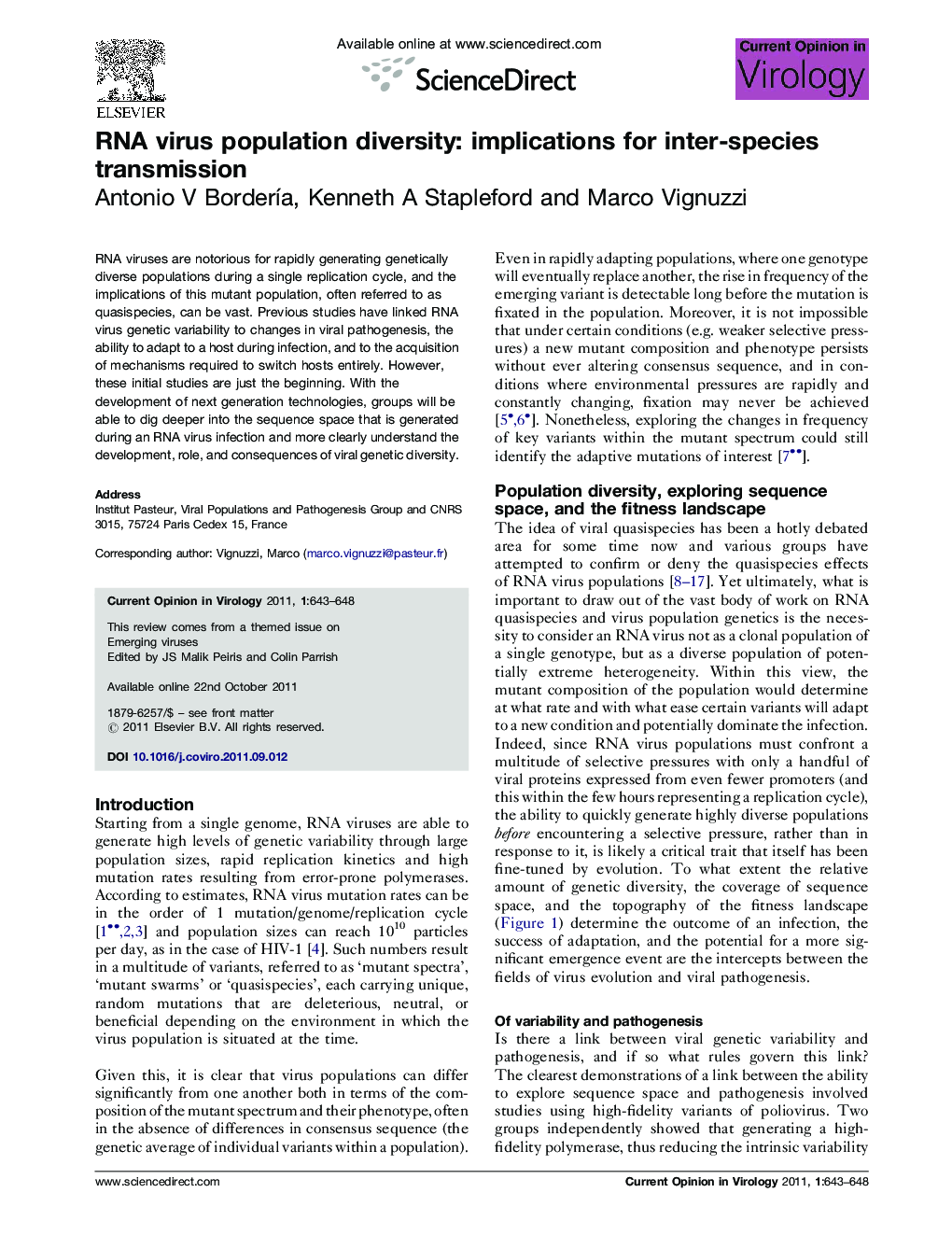| Article ID | Journal | Published Year | Pages | File Type |
|---|---|---|---|---|
| 2473421 | Current Opinion in Virology | 2011 | 6 Pages |
RNA viruses are notorious for rapidly generating genetically diverse populations during a single replication cycle, and the implications of this mutant population, often referred to as quasispecies, can be vast. Previous studies have linked RNA virus genetic variability to changes in viral pathogenesis, the ability to adapt to a host during infection, and to the acquisition of mechanisms required to switch hosts entirely. However, these initial studies are just the beginning. With the development of next generation technologies, groups will be able to dig deeper into the sequence space that is generated during an RNA virus infection and more clearly understand the development, role, and consequences of viral genetic diversity.
► By generating extreme genetic diversity, RNA viruses form heterogeneous populations to extensively explore sequence space. ► The fitness landscape, determined by host/environmental constraints defines the composition of the RNA virus population. ► Correlations between RNA virus population diversity and adaptation or pathogenesis have been observed for several viruses. ► Generating maximum diversity may provide the ideal combination of mutants to facilitate cross-species transmission. ► Characterizing sequence space and fitness landscapes in different hosts may identify the adaptive steps involved.
